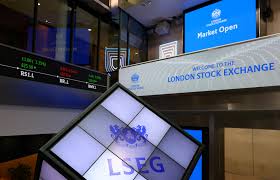
Introduction to the FTSE 250
The FTSE 250 index, known for comprising the 250 companies listed on the London Stock Exchange (LSE) below the FTSE 100, serves as a vital indicator of the UK economy’s mid-cap sector. This index is essential for investors, analysts, and policymakers as it reflects the performance of mid-sized UK companies and helps to gauge the overall market sentiment.
Recent Market Trends
As of October 2023, the FTSE 250 has seen significant fluctuations influenced by various economic factors. The index has rebounded from previous lows earlier in the year, reflecting renewed investor confidence amid improving economic indicators. In recent weeks, the index has gained approximately 8% since the start of the third quarter, bolstered by strong performances in sectors such as technology, healthcare, and consumer goods.
Market analysts attribute this rise to declining inflation rates and a stabilising economic outlook following the pandemic. Moreover, companies within the FTSE 250 have been benefiting from robust earnings reports, with many exceeding market expectations. This has injected optimism back into mid-cap investments, enticing both local and international investors.
Factors Influencing the FTSE 250
Several factors have contributed to the FTSE 250’s recent performance. First, the Bank of England’s policies aimed at controlling inflation while supporting economic growth have played a pivotal role. Investors are closely monitoring interest rate changes, which could shape market movement in the coming months.
Moreover, geopolitical events, especially concerning trade relationships and supply chain stability, continue to impact market dynamics. Companies within the index that rely heavily on exports have found both opportunities and challenges in the changing global landscape. This has emphasised the importance of adaptive strategies among FTSE 250 firms.
Conclusion and Significance for Investors
The current trajectory of the FTSE 250 suggests a potential for growth, making it a focal point for investors looking for opportunities within the UK market. With economic conditions gradually improving, mid-cap companies could provide promising returns compared to their larger counterparts. Analysts recommend keeping a close eye on sector-specific developments to identify high-growth potential stocks.
In conclusion, the FTSE 250 remains an essential barometer for understanding the health of the UK economy, particularly the mid-cap segment. As more data emerges and companies report their earnings, the index will continue to be a central theme in financial discussions, impacting investment strategies and market sentiment across the board.
You may also like

Current Status of the Bank of England Base Rate

The Impact of RB on Modern Banking
